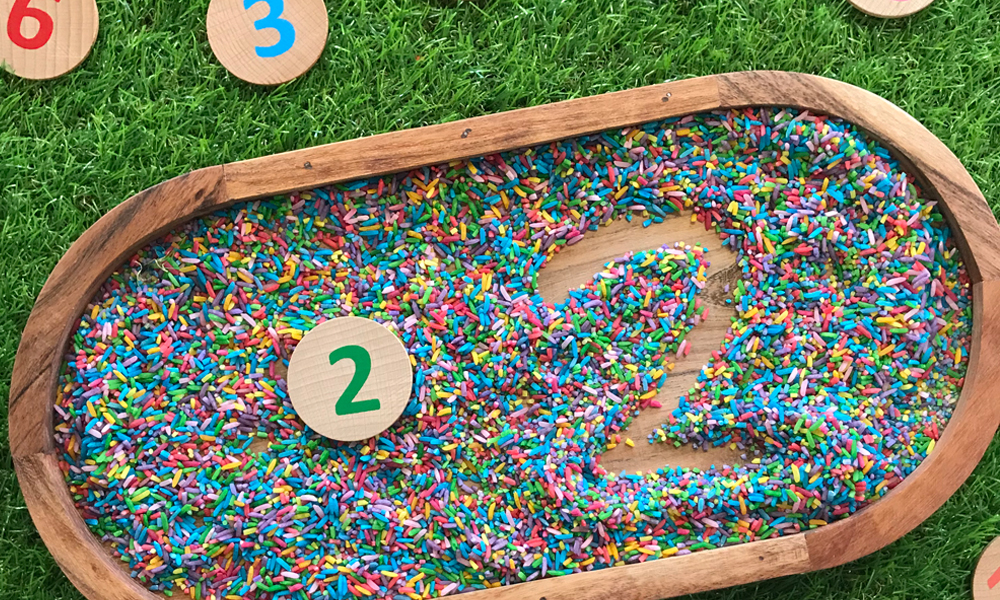As a teacher of young children, I am aware of the huge benefits of students engaging in hands-on learning. In the early years, it is essential for children to have opportunities to engage in kinaesthetic learning where they can absorb themselves in activities and gain a comprehensive understanding of concepts. When teachers facilitate hands-on, kinaesthetic activities, they are creating engaging and exciting ways for children to master concepts and develop deeper understandings. Read on to find out 10 of my favourite hands-on numeracy ideas that I implement in my Prep classroom.
1. Number hunt

Earlier in the year, we went on a ‘sight word’ hunt and my students LOVED it, so I knew that I was going to have to organise something similar for maths! We have been focusing on teen numbers this term so this was a fun, hands-on opportunity for us to consolidate this learning. In our number hunt, we walked around the school searching for teen number cards. When we found each number card, we traced the numeral and number word on our sheet and then represented that number using tally marks. It was so much fun finding numbers all around the school! Especially the ones in funny places!
What you’ll need:
- Clipboards (one per student)
- Pencils
- Sheet with numbers and number words to trace (one per student)
- Number cards (to be placed around school)
As we engaged in this activity, we developed a range of skills including:
- Recognition of teen numbers
- Numeral formation practice
- Knowledge of number words
- Representing numbers in different ways
- Gross motor skills
2. Number books
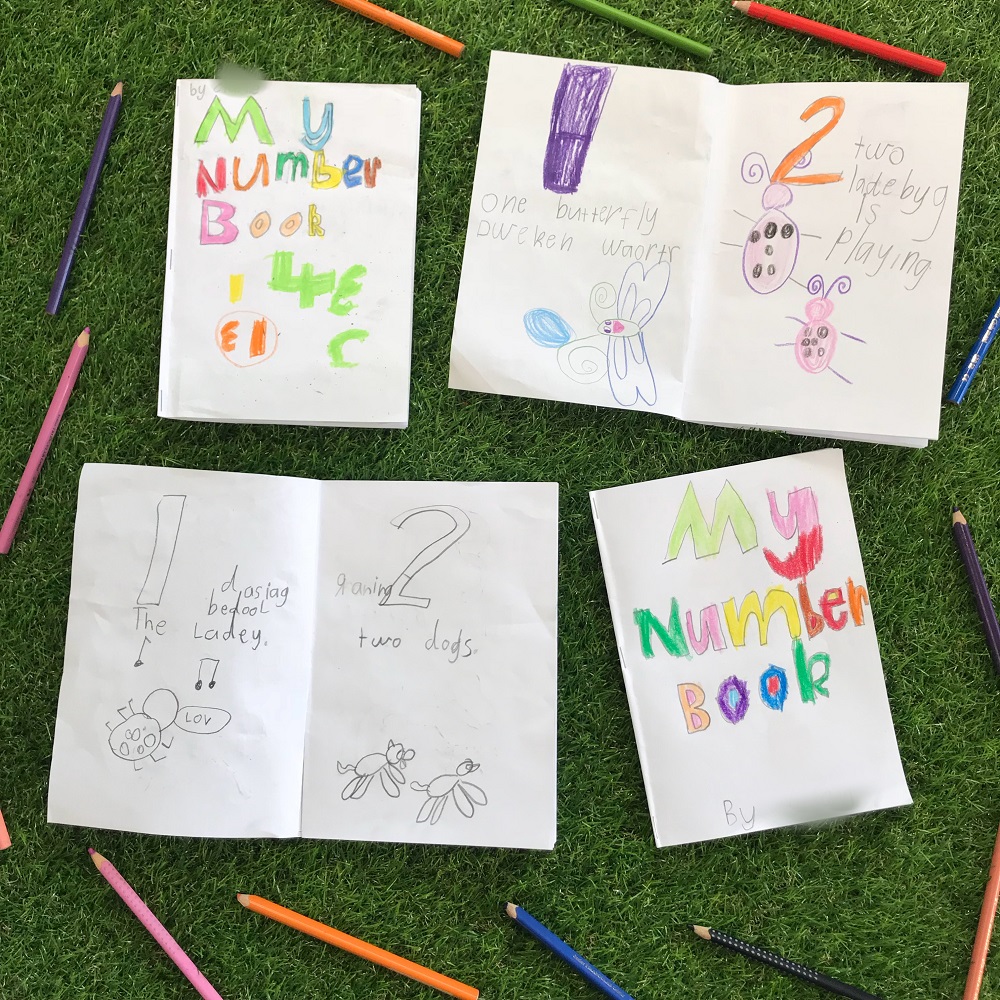
Over the first semester of Prep, we have focused heavily on numbers 1-20. At the end of the semester, I thought a great way to consolidate this learning would be to make a number book focusing on these numbers. The nature of this activity has allowed children to be creative and take ownership of their writing. I have loved hearing their creative responses and seeing their knowledge of numbers 1-20!

What you’ll need:
- An example book to show students what the task is
- ‘Books’ made from 11 pieces of paper folded and stapled
- Pencils to write and draw with
- Number posters to refer to if needed
As we engaged in this activity, we developed a range of skills including:
- Ordering numbers 1-20
- Numeral formation of the numbers 1-20
- Representing numerals with collections
- Knowledge of how books work and what they can be used for
- Writing skills and pencil grip
3. Number towers
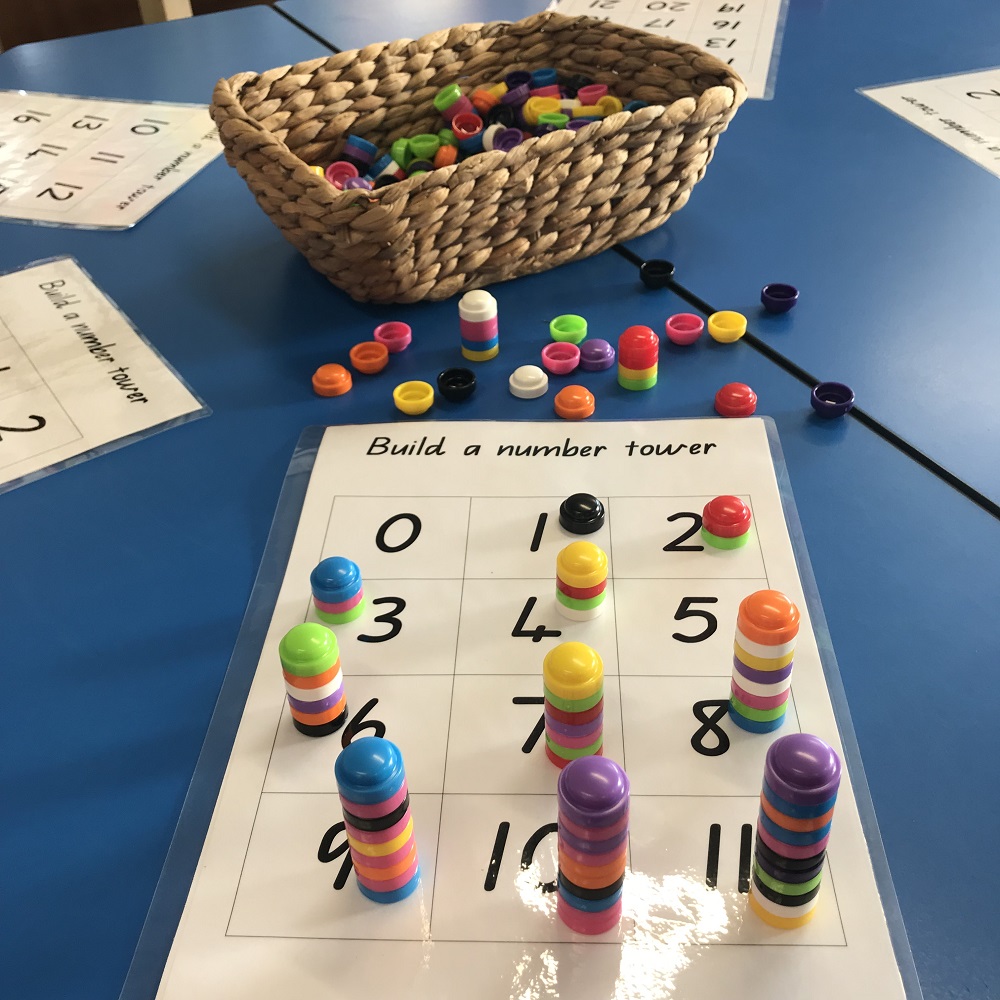
My students absolutely LOVE building so integrating this interest into our maths activities was crucial for maximum engagement. In this activity, students build a number tower with stackable counters to represent the numerals. As students are building their towers, they are counting using one to one correspondence as they add each counter.
What you’ll need:
- Number tower sheets laminated
- Stackable Counters
As we engaged in this activity, we developed a range of skills including:
- Numeral recognition
- Ability to represent numerals with a collection
- One to one correspondence
- Fine motor skills
- Hand-eye coordination
4. Rainbow rice number formation
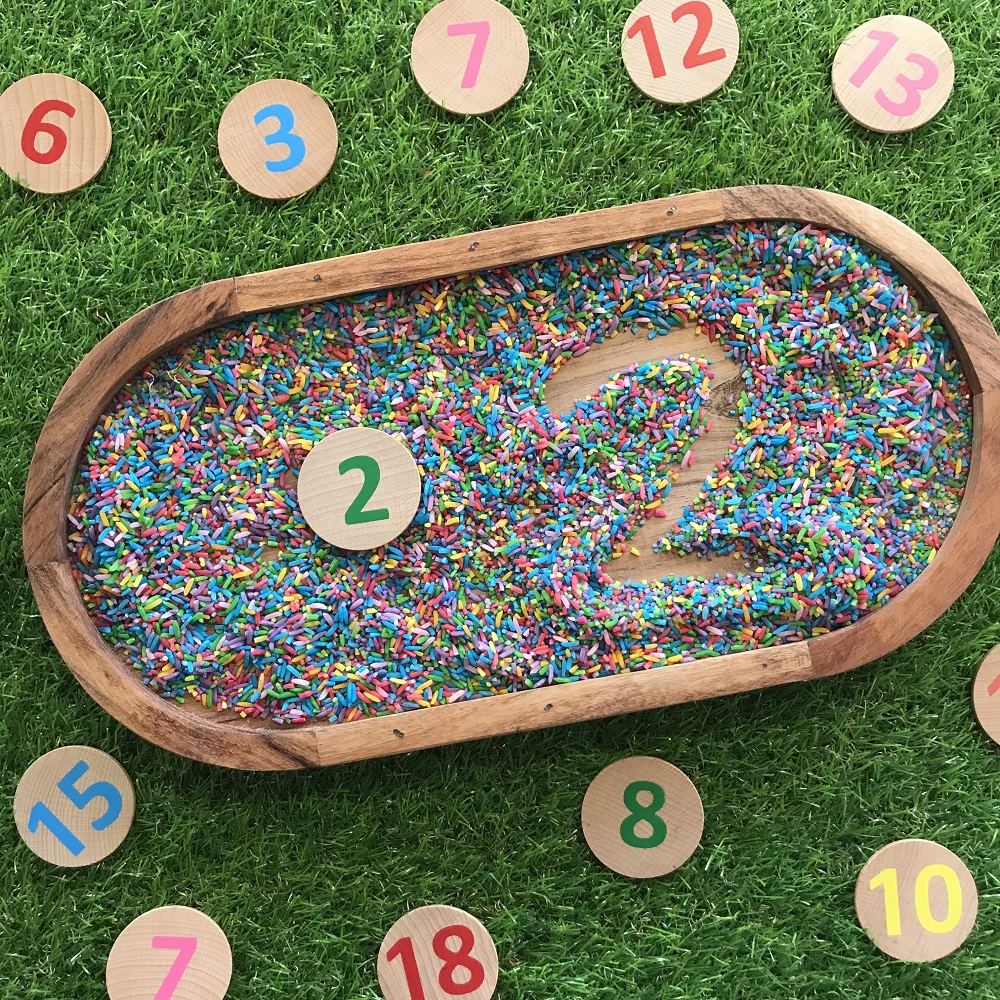
Learning to write numerals properly is a very important skill children should learn in their first year of school. We practice proper numeral formation through a range of tactile experiences including on the interactive smartboard, on our individual whiteboards, making numerals with playdough, and our favourite of all time; writing in rainbow rice. In this activity, students choose a number disc from the table and write the numeral in the rainbow rice with their finger. It’s a maths experience with a sensory twist!
What you’ll need:
- Rainbow rice (normal rice dyed with food colouring)
- 1-20 Wooden Number Matching Discs
- Tray to contain rice
As we engaged in this activity, we developed a range of skills including:
- Numeral formation
- Numeral recognition
- Sensory exploration
5. Rainbow rice number representation
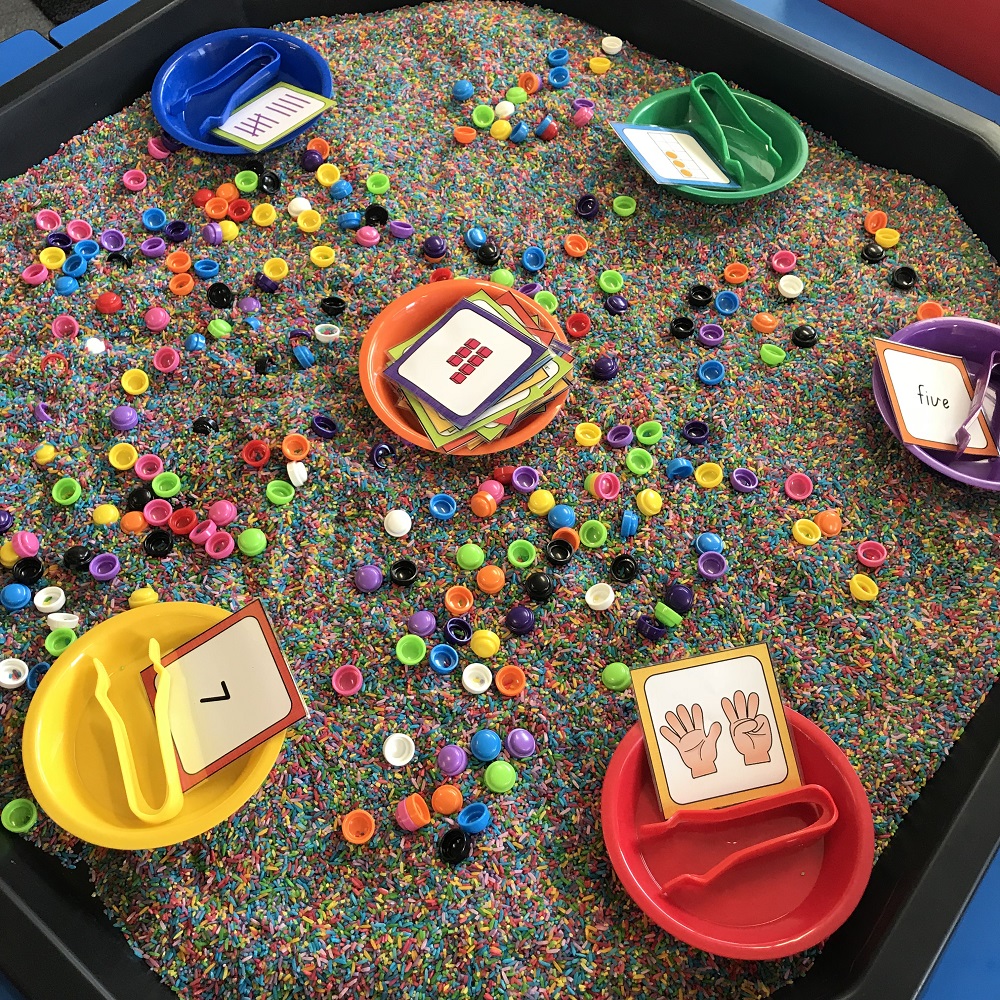
As mentioned above, we LOVE using rainbow rice in our maths activities. In this activity, students choose a number card and then represent this number using counters in their bowl. The cards contain number represented in different ways; numerals, number words, tally marks, tens frame etc. Students sift through the rainbow rice to find the counters and place the counters in their bowl by using tweezers.
What you’ll need:
- Rainbow rice (normal rice dyed with food colouring)
- Tuff Tray
- Stackable Counters
- Coloured Plastic Bowls
- Tweezers
- Printed number cards (representing numbers in different ways)
As we engaged in this activity, we developed a range of skills including:
- Understanding that numbers can be represented in different ways
- Number recognition
- Fine motor skills
- One to one correspondence
- Sensory exploration
6. Exploring 2D shapes

This term, we explored 2D shapes in-depth and learnt about the properties of each shape. One of the main activities we engaged in to reinforce this learning was using our Geoboards to create shapes. As students used the rubber bands to make 2D shapes on their Geoboards, they were encouraged to use mathematical language and discuss the properties of each shape as they made it. For example “I’m making a square… It has 4 vertices and 4 sides that are all equal”.
What you’ll need:
- Geoboards
- Rubber bands for Geoboards
- Printed 2D shape cards
As we engaged in this activity, we developed a range of skills including:
- Shape recognition
- Knowledge of 2D shape properties
- Use of mathematical language
- Fine motor skills
- Hand-eye coordination
7. Beanbag match up
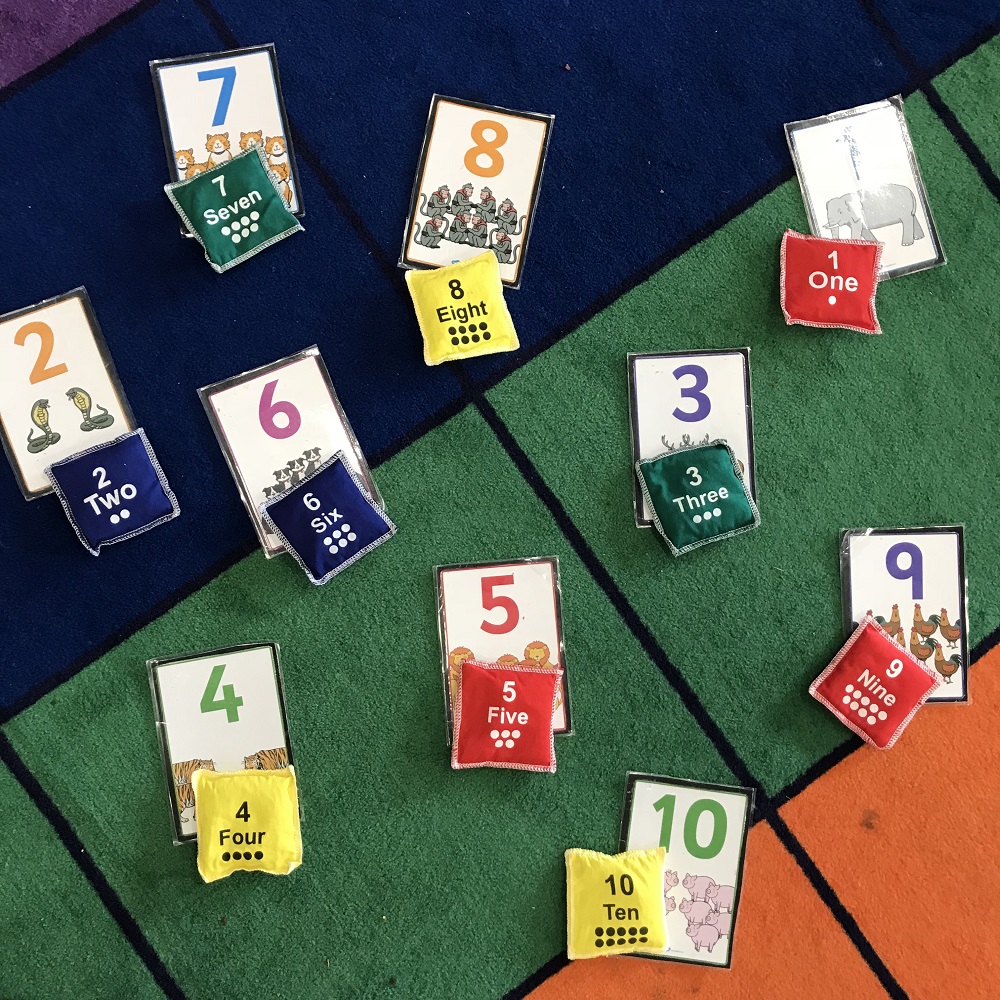
Resources that can be used in multiple ways are my absolute favourite! These number beanbags are used a lot in my classroom for various activities. Sometimes it’s as simple as using the beanbags for transitions; throwing a beanbag to each student and they have to say the number before they head to the next activity. We also like using the beanbags for matching activities, such as pairing them with number cards or throwing them in a numbered hula hoop.
What you’ll need:
- Printed number cards 1-10
- Number 1 – 10 beanbags
As we engaged in this activity, we developed a range of skills including:
- Numeral and number word recognition
- Counting
- Matching skills
- Gross motor skills
8. Number lock match up
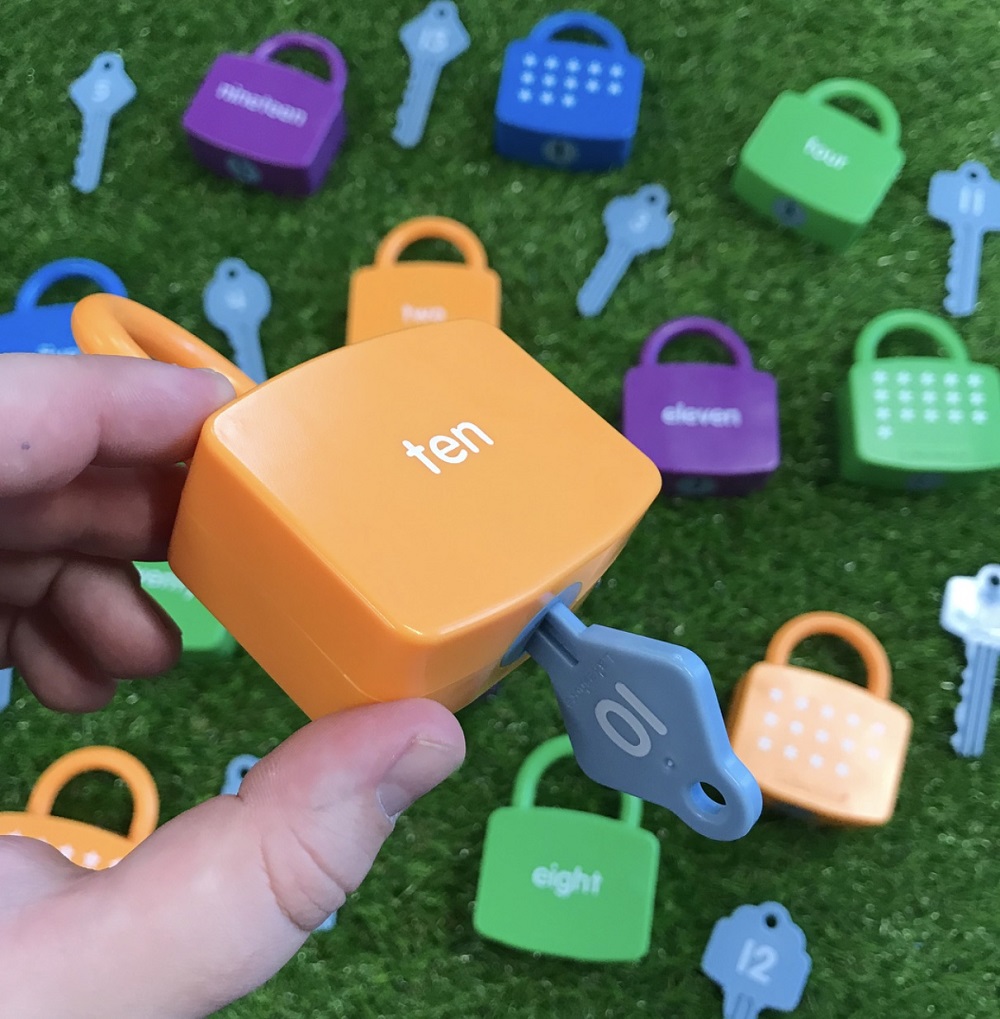
Representing numbers to 20 in different ways is a big focus for us in the first year of school. One of our favourite ways to explore this key maths concept is engaging with these number locks. I usually set these up as a maths rotation and students are encouraged to find the correct key to unlock the matching lock. Students have to use their knowledge of counting, as well as numeral and word recognition to match the correct key to lock, which reinforces their knowledge of number being able to be represented in different ways.
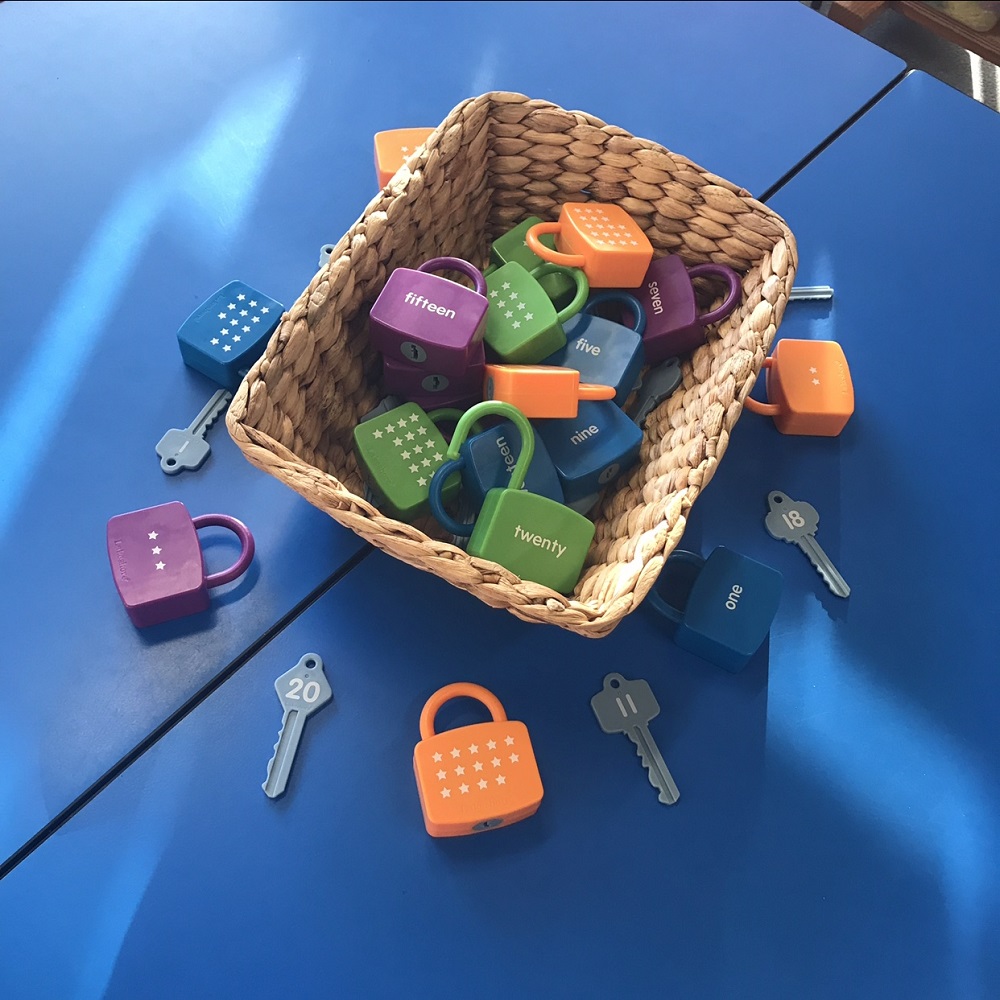
What you’ll need:
As we engaged in this activity, we developed a range of skills including:
- Numeral and number word recognition
- Counting skills
- Matching skills
- Hand-eye coordination
- Fine motor skills
9. Exploring direction and location with Beebots

One of the components we have been exploring in maths is direction and location. We have been using our Beebots and Beebot mats to explore positional and directional language as well as following and giving directions. When my students were first introduced to Beebots they were SO excited and this mathematical area has been one of the most engaging and enjoyable concepts to explore. We love working in groups and watching our Beebots follow our commands to move around the mats.

What you’ll need:
As we engaged in this activity, we developed a range of skills including:
- Positional and directional language vocabulary
- Following and giving directions to locations
- Using mathematical language
- Digital technology skills
- Teamwork skills
10. Number sort

At the beginning of the year in Prep, a lot of the focus in maths is on numbers to 10. One of our favourite maths activities to explore numbers to 10 was matching maths beads to number cards. The students use the tweezers to pick up the beads and match them to the corresponding number card.
What you’ll need:
- Tweezers
- Maths beads
- Printed number cards 0-9
As we engaged in this activity, we developed a range of skills including:
- Fine motor skills by using the tweezers
- Number discrimination
- Knowledge of numbers 0-9
- Sorting and matching skills
What is your favourite hands-on maths activity to implement in your classroom?
ABOUT HEIDI:
Heidi Overbye from Learning Through Play is a Brisbane based, Early Years Teacher who currently teaches Prep, the first year of formal schooling in Queensland. Heidi is an advocate for play-based, hands-on learning experiences and creating stimulating and creative learning spaces. Heidi shares what happens in her classroom daily on her Instagram page, Learning Through Play. See @learning.through.play for a huge range of activities, play spaces and lesson ideas.

